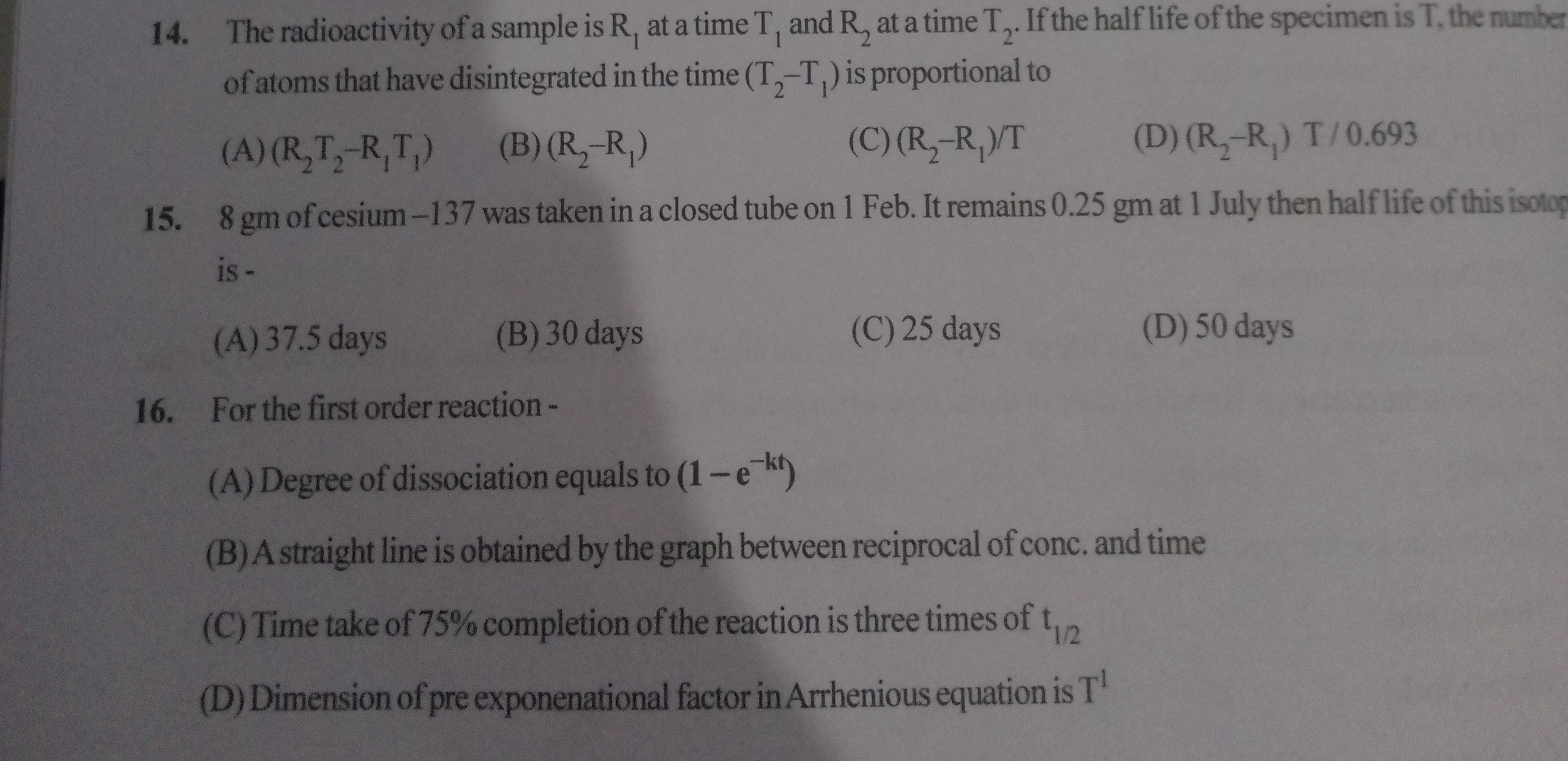Question
Question: The radioactivity of a sample is $R_1$ at a time $T_1$ and $R_2$ at a time $T_2$. If the half life o...
The radioactivity of a sample is R1 at a time T1 and R2 at a time T2. If the half life of the specimen is T, the number of atoms that have disintegrated in the time (T2−T1) is proportional to

A
(R2T2−R1T1)
B
(R2−R1)
C
(R2−R1)/T
D
(R2−R1) T/0.693
Answer
(R2−R1) T/0.693
Explanation
Solution
For a radioactive sample,
N=λR and λ=Tln2
The number of atoms disintegrated between T1 and T2 is
ΔN=N1−N2=λR1−R2=ln2(R1−R2)T
Since R1>R2, writing it as −ln2(R2−R1)T shows proportionality to (R2−R1)T/0.693.
